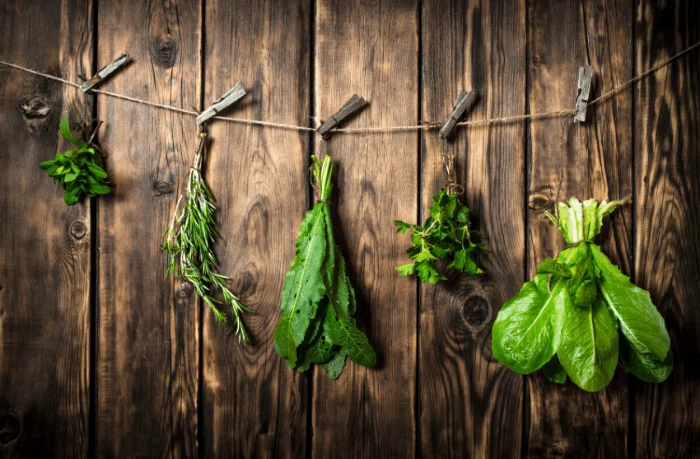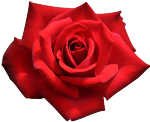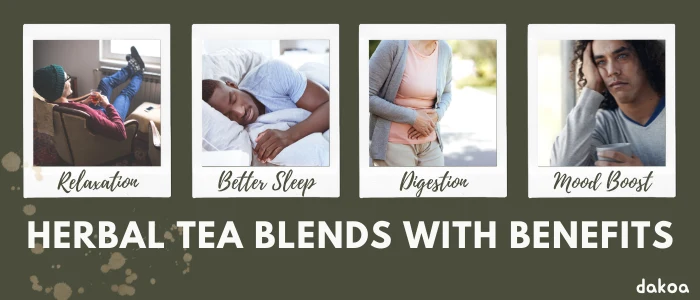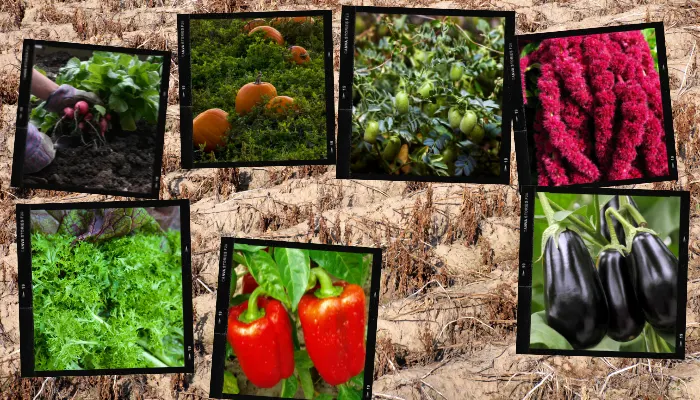Grow your own tea garden at home and cancel that overpriced tea subscription service.
Do you enjoy a hot, delicious cup of herbal tea, but you don't enjoy paying the high prices in stores, then consider growing your own herbal tea garden at home?
Herbs have been used for thousands of years for the medicinal properties they contain to treat a wide variety of ailments. For thousands of years herbs have treated insomnia, digestive issues, colds, flu symptoms, and even mood issues as the first mental health treatment.
One of the easiest ways to enjoy these helpful medicinal properties is also the oldest – a cup of hot tea.
Fantastic quality herbal tea blends tend to be very expensive, so starting your own herbal tea garden at home not only will save you money, but it also will give you the opportunity to create your own.
Why not tailor your own customized tea blends for you to enjoy as well as share with family and friends. To help you along in your tea growing journey, I’ve put together this guide to get you growing and creating your own herbal tea blends in no time.
Starting Your Herbal Tea Garden
You can choose to grow your herbs in containers or directly in a garden in your yard, there are benefits to growing in containers. They’re portable and can be grown indoors and outdoors, which could allow you to have some herbs that will grow all year long.
Use the handy list of herbs provided below to choose types you want to grow.
And, be sure to grow extra of any herbs that you plan to use frequently.
This way, you’ll know that you have enough of the herb to create your blends, without overharvesting your plants.
Always keep a note with any directions recommended on how much of each herb that can be harvested at one time, so you won’t cause damage that could kill your plants.
The size of your herbal tea garden can be as large or small as your available space will allow, have fun and get growing. A list of herbs and the benefits they can have is provided below.
How to Dry Your Herbs and Other Blend Ingredients
You can use your herbs fresh or dried, but dried herbs are best for long term storage. You can either air dry your herbs or you can use a food dehydrator, choose whichever method you are most comfortable using. I air dry my herbs.
To air dry herbs, some herbs, like thyme and catnip, can be easily dried by tying small bundles. It’s important to keep the herb bundles small. Too large or too tightly packed will restrict airflow, and they won’t dry properly.
Tie your little herb bundle together using string and hang the bundles with the leaves pointing down in a cool, dry place. Let them hang until completely dry.

Herbs, such as chamomile, basil and lavender, are best dried by picking the leaves or flowers off of the stems and placing them on a screen drying rack (or baking rack). There are drying racks available in stores or online, but you can also easily build your own. YouTube is a great resource for DIY drying racks.
When using a drying rack, you will need to place the leaves or flowers in a single layer. This ensures there is a good airflow to help the herbs dry.
After the herbs are completely dry (they are easily crumbled between your fingers), they’ll need to be stored in airtight containers. Mason jars work great for storing herbs. Be sure to label each container with the type of herb and the date it was harvested and dried. It’s best to dispose of any unused dried herbs after one year, as they start to lose their flavor and potency.
If you prefer fresh herbs for your tea, you can freeze your herbs in freezer bags for up to six months. Just be sure to place them in a single layer in the bags until they are frozen, then you can place more into the bag. This technique keeps the leaves separate and makes it easier to remove to boil up a quick cup of tea. Always dispose of any freezer burnt herbs.
To dry the other ingredients for your blends, such as ginger and citrus peels, thinly slice them and place them in a single layer on a baking tray and place into a 200 degree F oven for 2 hours. After 2 hours, if they aren’t completely dry, give them some more time.
Once dried, place the tray on the counter overnight before storing in an airtight container. Make sure to label them with the date they were dried, because just like the herbs, you will want to dispose of any after one year.

How to Blend Your Teas
Here’s my easy formula to masterfully create your tea blends.
Base Herb: This is the main herb or action herb and will be the main herb in your blend. This herb will provide the beneficial properties you want for your blend. This herb will make up 3 parts of your blend.
Compliment Herb: This is the herb that will compliment your base herb by improving the flavor and beneficial properties of the base herb. This herb will make up 1-2 parts of your blend.
Accent Herb: This herb provides the finishing touch for your blend and helps bring the blend together. These herbs and ingredients are usually stronger in flavor and don’t need to be added in large amounts. Common accent herbs include mints, lavender, citrus peel, cinnamon and ginger. This herb will make up 1/2 to 1 part of your blend. When adding this herb to your blends, start with a small amount and add more if needed.

Brewing Your Tea
To brew your tea, you can use a loose tea ball, paper tea bag or tea pot that has a tea filter included.
When brewing your dried herbs, use 1 tablespoon of herbs for each 8 ounces of boiling water and allow to steep for 3-5 minutes. Brew longer for a stronger tea.
Now, if you’re using fresh herbs, you’ll need to use 3 times as much of the herbs than when using dried. Dried herbs create a concentrated flavor that fresh herbs simply can’t match. So for 8 ounces of boiling water, you will need approximately 3 tablespoons of fresh herbs. You’ll also need to bruise the herbs before you brew by using a mortar and pestle to release the oils, like a mixologist.
Fresh herbs also must steep longer than dried herbs. Twice as long is the general rule, so 6-10 minutes, depending on how strong you like your tea.
Common Popular Tea Herbs and Why You Should Consider Them

Marjoram (leaves)
Helps relieve digestive issues, gas and stomach cramps.

Stevia (leaves)
This natural sweetener replaces refined sugar and may also help support healthier cholesterol levels and blood pressure.

Jasmine (flowers)
Beyond beautiful, Jasmine has been known to provide calm and may help muscle spasms.

Thyme (leaves)
Aromatic and herbaceous with properties that can relieve digestive issues and sore throat.

Ginger (root)
Contains antioxidants, antibacterial and anti-inflammatory properties. It has also been known to improve digestion and fight cold and flu symptoms.

Lavender (flowers)
Improves sleep, calming, reduces inflammation, boosts immunity.

Rosemary (leaves)
Helps boost memory, uplift mood, natural anti-inflammatory, and contains antioxidants while improving digestion.

Rose (flower petals and rose hips)
Beyond aromatic and relaxing, rose can boost immunity and can ease menstrual cramps.

Sage (leaves)
A distinctive aroma and flavor, sage is a natural anti-inflammatory.

Mint (leaves)
The quintessential herbal tea ingredient also can soothe a sore throat, improve sleep, and even help relieve digestive issues.

Lemon Balm (leaves)
Lemon balm has similar health benefits to mint, though stress reduction and as a natural digestive aid.

Holy Basil (leaves)
Boosts immunity while reducing stress and can act as a natural mild mood stabilizer.

Hibiscus (flowers of edible varieties)
More than looks, this flower is rich in vitamin C, aids digestion and can help reduce blood pressure.

Fennel (seeds)
Boosts immunity while reducing stress and can act as a natural mild mood stabilizer.

Chamomile (flowers)
A popular herbal tea ingredient that promotes relaxation and sleep, helps reduce anxiety and soothes stomach.

Catnip (leaves)
Not just for felines! This herb promotes relaxation, reduces anxiety and helps relieve coughs and gas.

Calendula (flower petals)
Beyond just beauty, the petals of the Calendula flower has natural anti-inflammatory properties.

Lemon Verbena(leaves)
Helps relieve joint pain, insomnia, digestive issues and even helps fight colds and flu symptoms.
The Herbs I Use Most In My Homegrown Herbal Tea and Their Health Benefits
- Fennel Seeds help relieve digestive issues.
- Cardamom has natural antimicrobial properties and may help with metabolic syndrome and diabetes while boosting heart health, and has even been documented as supporting stronger oral health.
- Anise Seed acts as an anti-inflammatory that is high in nutrients and has been known to reduce symptoms of depression while preventing growth of bacteria and fungi.
- Vanilla Bean is not just delicious, but it's also a natural anti-inflammatory.
- Nutmeg contains detoxifying and anti-inflammatory properties, and has been used for thousands of years to relieve digestive issues and improve sleep quality.
- Cloves are high in antioxidants, and act as a natural painkiller and has a well-earned reputation for its ability to relieve cold symptoms and sore throats.
- Ginger can relieve nausea and act as a powerful anti-inflammatory.
- Cinnamon is known to help lower cholesterol and blood sugar, but it's a triple threat as an antioxidant, antiseptic and anti-inflammatory.

My Favorite Herbal Blend Recipes For The Perfect Cup of Tea
The following mixes are my personal favorites. I use these blends to relax, get better sleep, and even help calm down my stomach when necessary.
Regardless of the blend you choose (get creative and make your own) you’ll make that perfect cup the same way.
First, mix all the herbs together and store them in an airtight container. You’ll want to use 1 tablespoon of the dried herb blend for every 8 ounces of boiling water. Be patient and let it steep to pull out all of that tasty and medicinal goodness from those herbs. Steep for 3-5 minutes, or longer if you want a really strong cup.
Relaxing Blend
-
- 1 part Holy basil
- 1 part Chamomile
- 1 part Lemon balm
- 1 part Lavender
Bedtime Blend
-
- 1 part Chamomile
- 1 part Lemon balm
- 1/2 part Lavender
Stomach Soothing Blend
-
- 1 part Chamomile
- 1 part Peppermint leaves
- 1/2 part Ginger root
- 1/4 part Fennel seeds
- 1/4 part Orange zest (optional for flavor, but personally recommended)
Feel Better Blend
-
- 1 part Peppermint
- 1 part Rosemary
- 1 part Thyme
- 1 part Lemon Verbena
FAQ
How much of my herb plants can I harvest without damaging the plant?
It’s best to limit your harvest to less than 1/3 of the plant and to harvest from a variety of areas on the plant to encourage growth.
When making herbal tea, do fresh or dried herbs produce a stronger flavor?
For the strongest flavors, you’ll want to use fresh herbs picked fresh right before brewing and to choose new young leaves and new flowers to get the best flavor.
What blend of herbs can I use to make an energy boosting tea?
To get a natural boost of energy from your tea, you can use herbs like, ginger, ginseng, sage, peppermint, ashwagandha, and guarana.

















